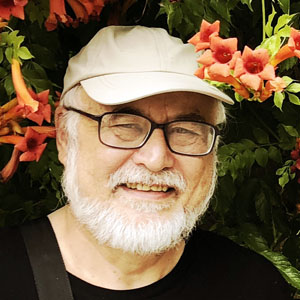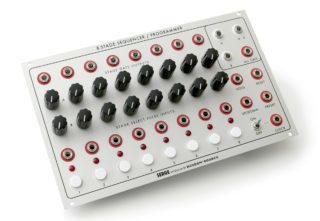
Random*Source has announced that composer and synth designer Serge Tcherepnin, creator of the classic Serge modular synthesizer system, has joined the company as Chief Innovation Officer, with a focus on developing the 5th generation of the Serge modular synthesizer system.
Tcherepnin originally created the Serge system in the early 70’s as an inexpensive alternative to Buchla or Moog systems. Tcherepnin created 4 generations of designs during the initial heyday of modular synthesizers.
Random*Source, founded by RC Hoffman, offers a range of classic Serge module and panel designs, and Serge designs in Eurorack format. Tcherepnin is joining them to lead the development of a number of new and previously unreleased designs.

“I’m excited to work even more closely with Ralf and the Random*Source team as we share the tech savviness, obsession with quality and constant urge to push limits further,” notes Tcherepnin. “The main goal is to expand the range of modules and sub-modules that lend themselves to being “patch-programmed” in unusual and unforeseen ways, thus to add to and expand musicians’ studio synthesizers way past standard synth configurations.”
“I’d like to see the Serge system to grow wide and large, modules all talking to each other,” he adds, “whether they originated in my Hollywood lair in ’75, or in the ’80s on Haight Street, or now, coming from Random*Source.”

thank you Serge for continuing to push the envelope!!
personally, I wish someone would come up with a standard for a hybrid system that has digitally patched, but analog osc and signal paths, so that you could have say a patch screen that let you virtually reroute and save analog paths and save the patches. it isn’t out of the realm of possibility to do it.
^ that sounds awesome!
@whormongr: Agreed. But don’t forget this is already been done on many non-modulars, such as the trusty OB Matrix 6 or the Waldorf Microwave, and most modern variants as Novation Peak, DSI, Behringer Deepmind by the availability of modulation slots. On the Matrix 6 even the patch signals themselves are analog and will add (or subtract) when multiple sources are sent to the same destination. Only the routing is digital.
What would actually be great for a modular if you combine the digital patching with Buchla’s concept, that adds digital storage of individual module settings.
All this is feasible, but I don’t expect it in in the near future, and don’t expect it to come cheap.
I think the difference though from a mod matrix is that you could sell modules the same way that you do with a standard modular system but have a “brain” that just does the routing. That way if you wanted to buy x number of oscillators or filters, etc.you could stack them and have the only physically routed connections as the direct audio out, any other signal out could be routed via the controller system and rerouted either matrix style or a virtual patch like in virtual modulars.
I believe the buchla 200e system has something very similar….Way out of my price range though
Check out the Anatal system, which is exactly that.
THIS IS VERY EXCITING NEWS. A proper original thinker back!